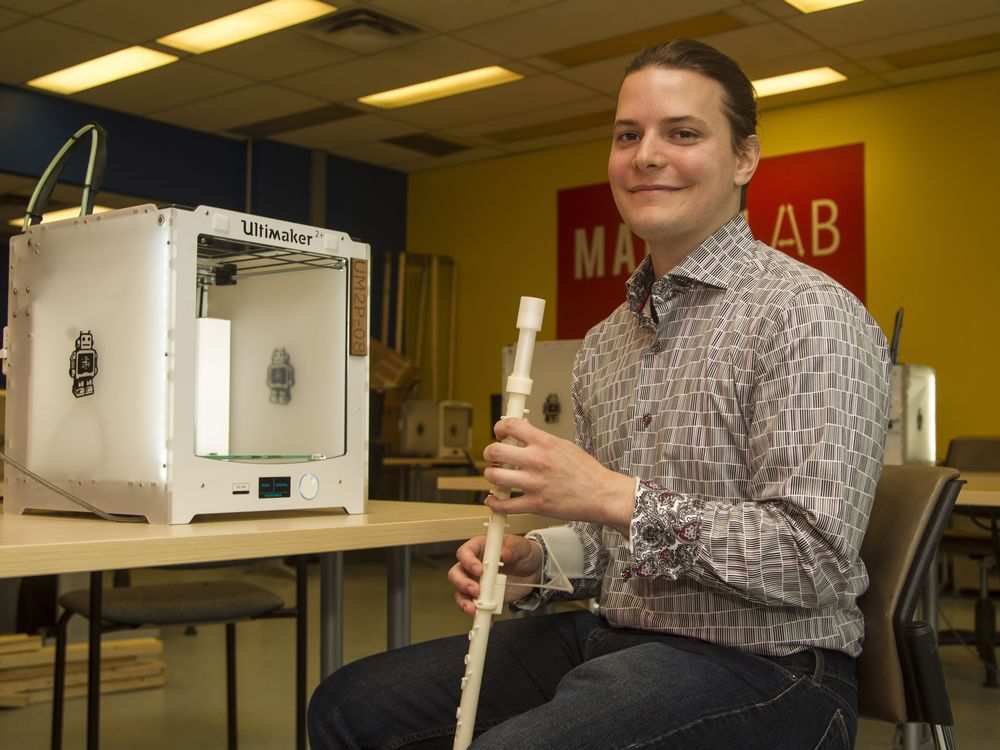In November, Ottawa Symphony Orchestra will open its new season with a concert which will feature eight 3D printed instruments and a performance by the winner of the “National 3D Printed Musical Instrument Challenge”.
Ottawa Symphony Orchestra (OSO) will be opening its new season on November 4th with Johann Sebastian Bach’s The Art of the Fugue at the Canadian Aviation and Space Museum.
However, they will be closing the show with a very different piece featuring eight-stringed 3D printed instruments written by Montreal/New York composer Harry Stafylakis. His music has been described as “an amalgamation of the classical music tradition and the soul and grime of heavy metal” which should be a sound to behold.
The 3D printed instruments for November’s concert include two that resemble a viola da spalla (a small cello played braced against the shoulder), four violins, and two violas. These instruments are part of OSO’s 3D String Theory project which hopes to incorporate emerging technologies in classical music.
As well as this, OSO’s 3D String Theory project is also hosting the “National 3D Printed Musical Instrument Challenge” which was released in March. At the November concert, there will be a performance by the winner.
The challenge was open to all Canadian residents and currently there are three finalists. Participants were encouraged to design an “ergonomically-optimized”, include 3D printed components and cost just $5,000 to fabricate. The instrument should also address one of the numerous performance-related injuries that musicians suffer from.
Finalists for OSO’s 3D Printed Musical Instrument Challenge
Robert Hunter, a biomedical Ph.D. student at the University of Ottawa, is one of three finalists in the competition. He designed a new clarinet and arm brace to redistribute the instrument’s weight from a performer’s thumb to stronger muscles. The instrument was then 3D printed on an Ultimaker 2+.
The reason for choosing this instrument was that he played clarinet in high school and would often feel pain in his thumb and wrist. Hunter explains: “That’s one of the things we teach in class… A problem from personal pain is always a good project.”
Another finalist is Jared Kozub, from Winnipeg, who designed a hand-held wind instrument. Traditionally, this instrument is made from clay or ceramic, but Kozub used 3D printing to create better ergonomics and develop a pitch-shifting mechanism.
The last finalist is Victor Martinez, a Richmond, B.C. designer. He developed an electric violin with a chin-and-shoulder-rest system. This system will adapt to the exact posture, shape and playing style of a performer.
Although 3D printing hasn’t regularly been used for creating fine musical instruments, it can certainly offer many benefits. For example, customized designs created in small numbers, for a low cost and improved accessibility.
Find out more about Ottawas Symphony Orchestra and keep an eye out for updates on who wins the competition by visiting the website.
Source: Ottawa Citizen

License: The text of "Ottawa Symphony Orchestra Incorporate 3D Printed Instruments into Classical Music" by All3DP is licensed under a Creative Commons Attribution 4.0 International License.